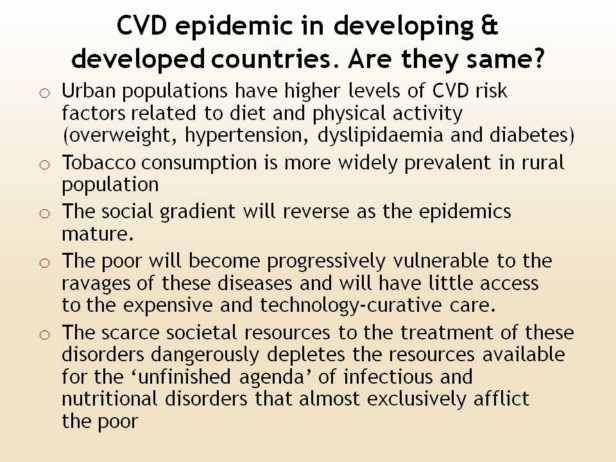| front |1 |2 |3 |4 |5 |6 |7 |8 |9 |10 |11 |12 |13 |14 |15 |16 |17 |18 |19 |review |
 |
At present, urban populations in most developing countries have higher levels of cardiovascular risk factors that are related to diet and physical activity (overweight, hypertension, dyslipidaemia and diabetes), while tobacco consumption is more widely prevalent in rural populations27,28. This suggests that tobacco consumption is influenced more by education and is the earliest risk factor to demonstrate a reversal of the social gradient. The other risk factors are influenced by more complex social interactions affecting diet and exercise and their social gradients reverse relatively slowly. The economic and social consequences of the CVD epidemics in the developing countries will be devastating. The social gradient will reverse as the epidemics mature, as has happened in other nations that have experienced their fury in full form. Even at present, several of the risk factors of chronic diseases are showing a reversal of the social gradient in many developing countries4. The poor will become progressively vulnerable to the ravages of these diseases and will have little access to the expensive and technology-intensive management that clinical care demands. Also, the diversion of scarce societal resources to the treatment of these disorders dangerously depletes the resources available for the ‘unfinished agenda’ of infectious and nutritional disorders that almost exclusively afflict the poor |